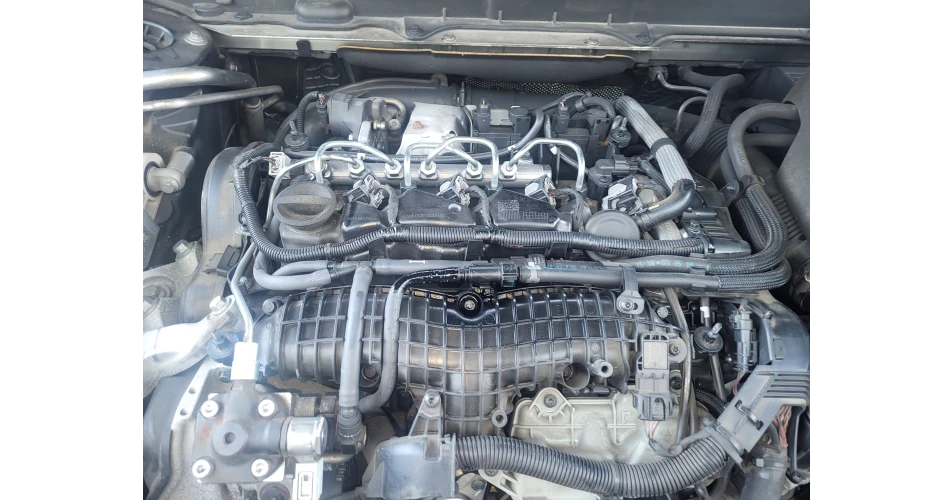A customer brought their recently purchased 2018 Volvo XC90 to our garage, Shanahan’s Auto Services in Gorey, Co. Wexford. The Volvo had a number of issues. The customer had recently bought the vehicle, and after a period of time it had lost power. The owner said “the tortoise was on the dash” and indeed the check engine light was on.
As usual, we questioned the customer and gathered as much information as we thought necessary, This normally includes known history of vehicle, the symptom, driving habits and anything else that may prove useful.
I started with a visual inspection of the Volvo. While looking under the bonnet, I noticed the distinct smell of exhaust fumes and a deposit of sooty dust on the passenger side of the engine bay. I removed the engine cover and immediately saw oil sprayed underneath it and across the inlet manifold.
An initial scan for fault codes flagged up numerous fault codes, including MAF, EGR, DPF and Power Pulse temp sensor faults. A short test drive quickly confirmed the lack of power. What was also very noticeable was the noises coming from the engine bay.
I decided to carry out smoke pressure tests on the intake and exhaust manifolds. During these tests, I found a broken EGR tube, which was the source of the soot deposits and exhaust smell. Continuing to look for any other faults, I also found a leak in the inlet manifold. The intake manifold was leaking at its centre, along a seam by a bolt hole.
What peaked my interest though, was the PowerPulse fault code P1065 (PowerPulse temp sensor short or open). The PowerPulse system is basically a way of spooling up the turbo to reduce lag. It allows already compressed air, from a compressor-filled holding tank, be injected into the exhaust manifold. This rapidly increases flow of exhaust gasses, which increases the rotation of the turbocharger. The fault, referring to a temperature sensor lead me to inspect the compressor to check the operation of this sensor. The technical information I had, led me to a temperature sensor on the unit itself. It wasn’t your conventional looking temperature sensor.
The temperature sensor actually looks like an earth cable connector, but on closer inspection there were two wires into it. When the insulation wrap was removed from the wiring, I found that one wire had broken. I carried out a repair of the wire. This allowed me clear the fault code, which was permanent up this point.
There were quite a few other repairs required on this vehicle as well, When all was done, I managed to carry out a successful extended road test, and got this customer back on the road.
To read more of this technical article or download the entire article click
here. There are lots more Tech Tips to view, and they are all searchable, on
TechTips.ie.
 Oil residue indicated a leak on inlet manifold
Oil residue indicated a leak on inlet manifold
 Keith Shanahan, Shanahan Auto Services
Keith Shanahan, Shanahan Auto Services